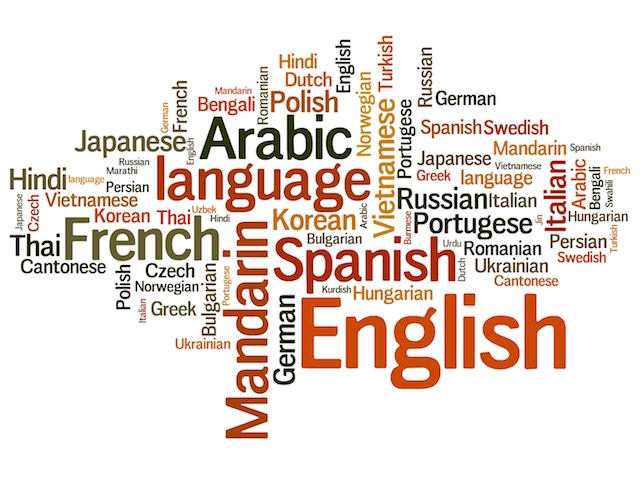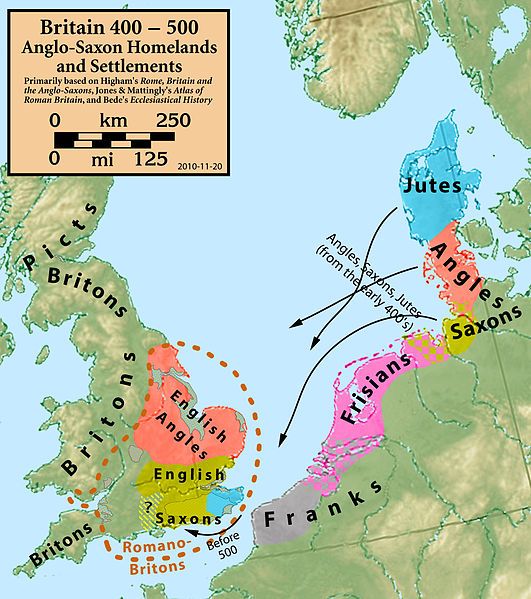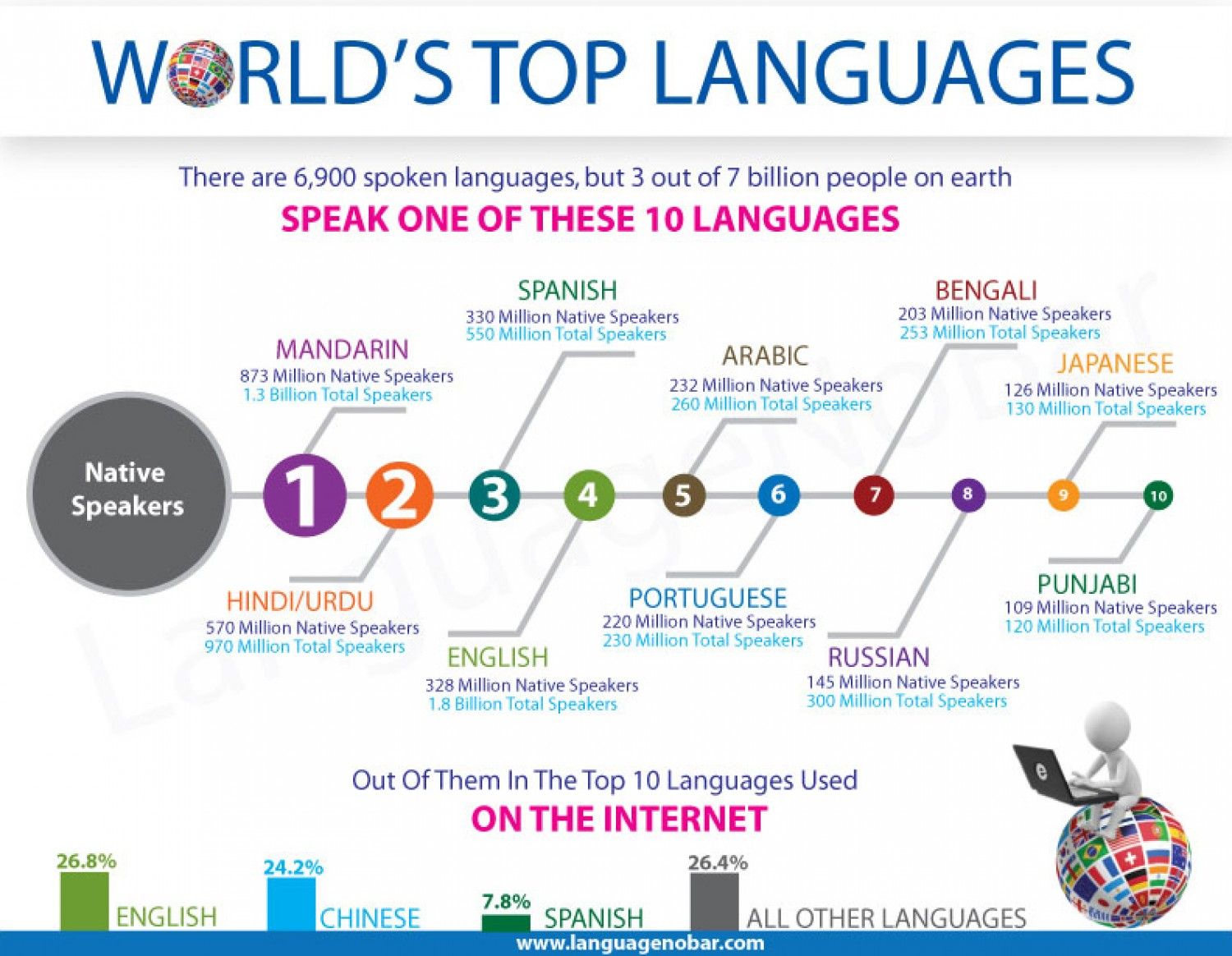Branding the English Language
January 14, 2020 African language / African word / Amharic / Arabic / Asiatic / Bengali / Chai / China / Chinese / communication / Egyptian / English / Ethnologue / French / German / Hausa / Hindi/Urdu / Japanese / Joomla / Jukebox / Korea / Korean / language / Latin / Portuguese / Russian / Spanish / Sumerian / Summer Institute for Linguistics / Swahili / US / USA / Wolof / Yoruba / Zebra

In human history, the first means of communication known to human beings are drums and horns while the oldest written records found are Sumerian and Egyptian. It is reported that language is at least 50,000 years old therefore, language is a means of communication that allows us to interact with one another, exchange information in order to understand each other and convey knowledge to have a collective and individual impact. With various ways of communicating, including but not limited to, non-verbal and verbal communication methods, language is a cultural trait that is often disregarded from the branding equation.
Acknowledging the power of LANGUAGE and culture, the English language is a brand that stands on its own and has become the primary language for transaction and human connection necessary for this global economy.
Brief History of Languages
In 21st century, there are about 6000 remaining languages in the world, from ancient languages like Latin that first appeared as script in 75 BC to Ge’ez or Ethiopic script possibly developed from the Sabaean/Minean script with the earliest known inscriptions that dates back to 5th century BC. Latin being the origin of Roman-based languages such as Spanish, French, Italian, Portuguese, Catalan and Romanian and many words today, including in modern-day English, Latin has maintained its dominance as an official language in the Vatican and in Poland. For instance, Roman-based languages counts 470 million native speakers in Spanish, 90 million in Italian,150 million in French, 250 million in Portuguese, and 25 million in Romanian. In parallel, there are languages such as Armenian that belongs to the Indo-European language family and is the oldest surviving text with a Biblical translation done in the 5th century, and based on the latest texts found, the language is reported to have started in 450 BC. Note, today, Armenian is still spoken by about 5 million people mainly located in Armenia, Iran, Georgia, Russia and Ukraine. Another holy language used mainly for religious texts is Hebrew and a national language of Israel, Hebrew is an old Semitic language that has its first script dating back to 1000 BC and has been recognized to be more than 3,000 years old.
Moreover, languages such as Korean is considered as one of the oldest living language in the world that came from Proto-Korean and Old Korean which includes modern Korean that was established in the 17th century. It is now spoken in South and North Korea aside from Russia, Kazakhstan, Uzbekistan, Japan and China. Other languages with history are mainly Chinese which has 1.2 billion speakers with Mandarin speaking people roughly estimated at 917 million. Chinese also had the first script appear in 1250 BC whereas Greek made its first appearance in 1450 BC to be now spoken by 10.7 million people. Asiatic languages such as Sanskrit that is 4,000 years old (some say its 6,000 years of age) has been used as the language of the classics in India though today’s India has over 20 languages dominated by Hindi that is spoken by 551 million and Bengali by 91 million people. Tamil would also be considered the world’s oldest languages given that it is over 5,000 years old, having made its first appearance in 300 BC, and is presently spoken by 67 million people.
“ The limits of my language means the limits of my world.” ― Ludwig Wittgenstein
On the other hand, the African continent has anywhere between 1000 and 2000 languages, and is home to approximately one-third of the world’s languages. Harvard study shows ” the languages of Africa break down into four large families (phyla), with an additional Austronesian family spoken in Madagascar; the four continental language families are: Niger-Congo, Nilo-Saharan, Afroasiatic, and Khoisan. Languages such Egyptian that is considered one of the oldest languages in the world appearing about 4,700 years old, now spoken by 250 million and known as Arabic has been around for well over 1000 years and is believed to have originated in the Arabian Peninsula. Regardless of the language, scientists have claim to have traced the world’s 6,000 modern languages — from English to Mandarin — back to a single “mother tongue,” an ancestral language spoken in Africa 50,000 to70,000 years ago. Today, the most widely spoken ones in Africa are: Swahili (150 million), Arabic (100 million), Hausa (50 million), Yoruba as well as Oromigna (30 million each) and Amharic (21 million).
Now, let’s talk about the history of the English language really started with the arrival of three Germanic tribes who invaded Britain during the 5th century AD.  These tribes, the Angles, the Saxons and the Jutes, crossed the North Sea from what is known today as Denmark and northern Germany. At that time the inhabitants of Britain spoke a Celtic language though most of the Celtic speakers were pushed west and north by the invaders – mainly into what is now Wales, Scotland and Ireland. The Angles language was called “Englisc” – from which the words “England” and “English” are derived. The invading Germanic tribes spoke similar languages, which in Britain developed into what we now call Old English and is still found in the English language of today. In the 14th century English became dominant in Britain though had with many French words added. This language is called Middle English. The invention of printing also meant that there was now a common language in print and in 1604 the first English dictionary was published. Finally, Modern English was established with many more words, arising from two principal factors: firstly, the Industrial Revolution and technology created a need for new words; secondly, the British Empire at its height covered one quarter of the earth’s surface, which makes the English language one of the only languages that adopted foreign words from many countries.
These tribes, the Angles, the Saxons and the Jutes, crossed the North Sea from what is known today as Denmark and northern Germany. At that time the inhabitants of Britain spoke a Celtic language though most of the Celtic speakers were pushed west and north by the invaders – mainly into what is now Wales, Scotland and Ireland. The Angles language was called “Englisc” – from which the words “England” and “English” are derived. The invading Germanic tribes spoke similar languages, which in Britain developed into what we now call Old English and is still found in the English language of today. In the 14th century English became dominant in Britain though had with many French words added. This language is called Middle English. The invention of printing also meant that there was now a common language in print and in 1604 the first English dictionary was published. Finally, Modern English was established with many more words, arising from two principal factors: firstly, the Industrial Revolution and technology created a need for new words; secondly, the British Empire at its height covered one quarter of the earth’s surface, which makes the English language one of the only languages that adopted foreign words from many countries.
The Power of the English Language
Contended by Mandarin, Arabic and even Spanish is the English language, which has been leading as the desired and favored language, given that 360 million native speakers in addition to one of the half a billion people who speak English as a second language. Even though the number of people that speak other languages correlates with the country’s population, the English language dominance is tied to currency and brand value which is about sophistication and power. The English language brand has been positioned as the business language for all to utilize and conduct any transaction with the greatest consumer market in the world. Although there are varieties of English ( Canada, Australia, New Zealand and others ), American English is particularly influential, due to the US’s dominance of cinema, television, popular music, trade and technology (including the Internet). Noting that American English, at the establishment of the country, has been influenced by Spanish, French and even West African languages.
English is the most widely spoken language in the world even if Chinese is number one for the number of native speakers, though English counts 400 million mother-tongue speakers and at least as many using it as a second language. English has become the world’s main communication tool and almost universally the second language in most countries. In today’s society, “bilingual” is usually taken to mean fluency in the home language and English. Some may argue that English is a Latin script language, which makes it easier to learn for a majority of the world.
And as we explore the journey of cross-cultural branding, the power of the English language is undoutbly the preferred language of the world. It is hard to overlook that many African words have been integrated in the English language, and in some cases, they have become a household brand names. Evidently, numerous companies have been using African words to name and brand their products, and hereunder a brief list of common words that directly derive from African languages.
US BRANDS
JOOMLA means “all together” or “as a whole” – in Swahili
CHAI means Tea – in Swahili
FANDANGO means a Spanish dance from the kikongo empire – in Swahili
SONI (written SONY) means “Something to regret”- in Swahili
Rhebok aka Reebok means a type of gazelle or antelope – in Afrikaans
Other English words deriving from African Languages
Juke and jukebox means disorderly or wicked – in Wolof
Zebra means the animal – in one of the Congolese languages
Mumbo jumbo means a masked dancer – in Mandigo
Okay means “that’s it” or “all right” – in Wolof
Dig means “ Look here” or “understand” – in Wolof
Honkie means red or pink and is pronounced as “Hong” – in Wolof
Jamboree means “Slave” and has been defined as noisy slave celebration – in Wolof
Hipi aka Hip means to open ones eyes, to be aware of what is going on or happening – in Wolof
Bambi means “one who lies down in order to hide” – in Bantu
Zombie means Deity or Fetish – in one the Congolese languages
From Swahili to Wolof, African languages should be accredited for becoming part of our daily vocabulary that have been inspiring the names of brands established by numerous North American startups, businesses and entrepreneurs.
Branding your language
 And that is why we call cross-cultural branding an important avenue towards a globalized economy. As many countries struggle to adjust to a rapidly changing world, language is one of the factors of transaction, brand building and market penetration. Even though the English language is a commanding language for branding, cross-cultural branding is about localization and intercultural interaction.
And that is why we call cross-cultural branding an important avenue towards a globalized economy. As many countries struggle to adjust to a rapidly changing world, language is one of the factors of transaction, brand building and market penetration. Even though the English language is a commanding language for branding, cross-cultural branding is about localization and intercultural interaction.
Contact us, we are here to assist you in your branding needs.
« Introducing Cross-Cultural Branding